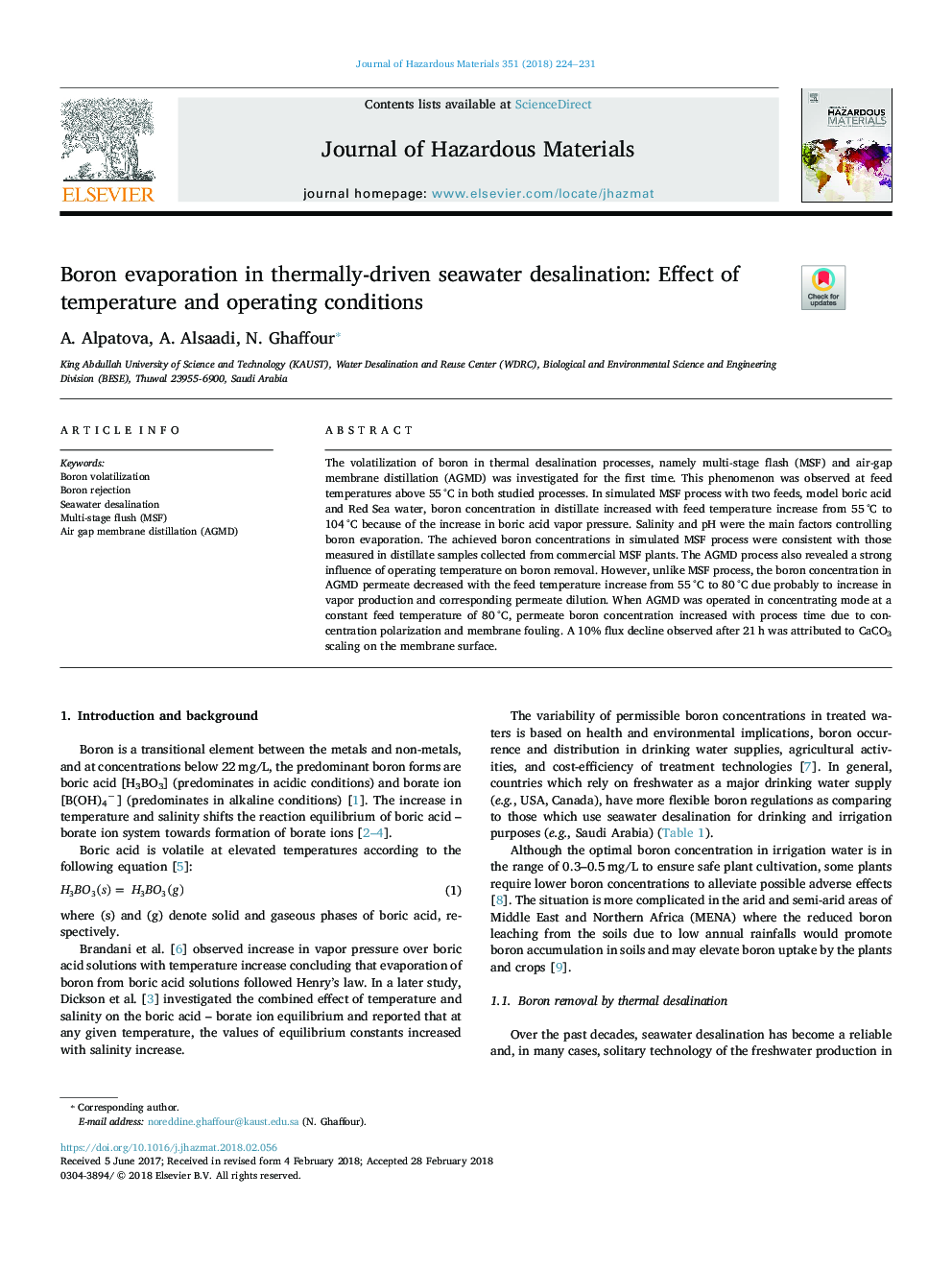| Article ID | Journal | Published Year | Pages | File Type |
|---|---|---|---|---|
| 6968748 | Journal of Hazardous Materials | 2018 | 8 Pages |
Abstract
The volatilization of boron in thermal desalination processes, namely multi-stage flash (MSF) and air-gap membrane distillation (AGMD) was investigated for the first time. This phenomenon was observed at feed temperatures above 55â¯Â°C in both studied processes. In simulated MSF process with two feeds, model boric acid and Red Sea water, boron concentration in distillate increased with feed temperature increase from 55â¯Â°C to 104â¯Â°C because of the increase in boric acid vapor pressure. Salinity and pH were the main factors controlling boron evaporation. The achieved boron concentrations in simulated MSF process were consistent with those measured in distillate samples collected from commercial MSF plants. The AGMD process also revealed a strong influence of operating temperature on boron removal. However, unlike MSF process, the boron concentration in AGMD permeate decreased with the feed temperature increase from 55â¯Â°C to 80â¯Â°C due probably to increase in vapor production and corresponding permeate dilution. When AGMD was operated in concentrating mode at a constant feed temperature of 80â¯Â°C, permeate boron concentration increased with process time due to concentration polarization and membrane fouling. A 10% flux decline observed after 21â¯h was attributed to CaCO3 scaling on the membrane surface.
Related Topics
Physical Sciences and Engineering
Chemical Engineering
Chemical Health and Safety
Authors
A. Alpatova, A. Alsaadi, N. Ghaffour,
